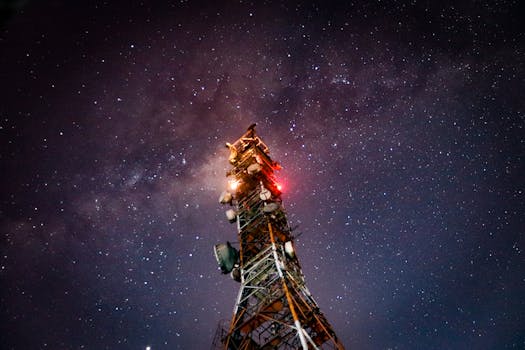
Starlink: Revolutionizing Global Internet Connectivity with Satellite Technology
Starlink is a satellite constellation developed by SpaceX, a private aerospace manufacturer and space transport services company founded by Elon Musk. The project aims to provide high-speed, low-latency internet connectivity worldwide, bridging the digital divide and transforming the way we communicate. With its cutting-edge technology and ambitious goals, Starlink is poised to revolutionize the global internet landscape.
The concept of Starlink was first announced in 2015, with the initial goal of launching a constellation of 4,425 satellites into low Earth orbit. However, the project has since expanded, with plans to launch up to 42,000 satellites in the coming years. Each satellite is equipped with advanced technology, including Hall effect thrusters, Starlink-specific antennas, and a compact, flat-panel design. The satellites are designed to be highly efficient, with a lifespan of approximately five years, after which they will be de-orbited and replaced with new satellites.
How Starlink Works
Starlink uses a combination of advanced technologies to provide fast and reliable internet connectivity. The system operates on the Ka- and Ku-bands, with a planned upgrade to the V-band in the future. The satellites are connected to a network of ground stations, which are responsible for transmitting and receiving data to and from the satellites. The ground stations use advanced beamforming and phased array technologies to communicate with the satellites, ensuring high-speed and low-latency data transfer.
When a user sends data through the Starlink network, the signal is transmitted to the nearest satellite, which then relays the signal to the destination satellite. The signal is then transmitted back to Earth, where it is received by a ground station and routed to its final destination. This process happens rapidly, with latency as low as 20 milliseconds, making it suitable for real-time applications such as online gaming and video conferencing.
Benefits and Applications of Starlink
Starlink has the potential to revolutionize the way we communicate, with far-reaching benefits for individuals, communities, and businesses. Some of the key benefits and applications of Starlink include:
Global connectivity: Starlink will provide internet access to remote and underserved communities, bridging the digital divide and empowering people to connect with the global economy.
Disaster response and recovery: Starlink can provide critical communication services during natural disasters, helping emergency responders to coordinate relief efforts and providing vital information to affected communities.
Rural broadband: Starlink can provide high-speed internet access to rural areas, enabling businesses and individuals to access online services, communicate with customers and suppliers, and participate in the digital economy.
IoT and M2M: Starlink can support the growth of the Internet of Things (IoT) and machine-to-machine (M2M) communications, enabling the development of smart cities, smart homes, and industrial automation.
Challenges and Limitations of Starlink
While Starlink has the potential to transform the global internet landscape, there are several challenges and limitations that need to be addressed. Some of the key challenges include:
Regulatory hurdles: Starlink must comply with a complex array of regulations and laws, including those related to spectrum allocation, satellite operations, and data protection.
Interference and congestion: The growing number of satellites in low Earth orbit poses a risk of interference and congestion, which could impact the performance and reliability of the Starlink network.
Cost and affordability: The cost of accessing the Starlink network may be prohibitively expensive for some users, particularly in developing countries or rural areas.
Security and cybersecurity: The Starlink network must be designed and operated with robust security and cybersecurity measures to protect user data and prevent cyber threats.